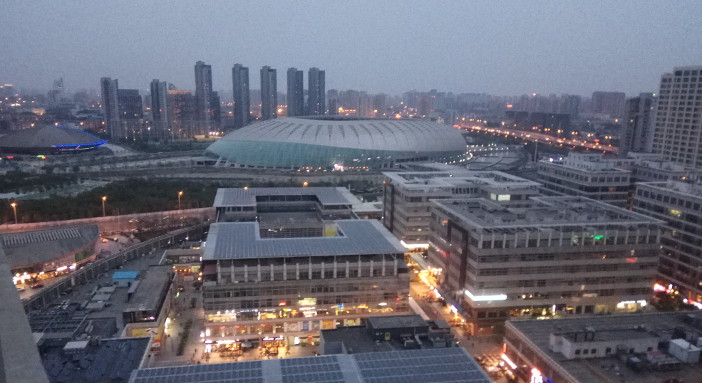The decision to visit Tianjin was, for us, a last minute one. Our planning for the Dragon Boat Festival weekend was stymied by visa renewal and my wife finally changing her passport over to her married name (she is stuck with me now for good, ha ha ha.) As a result we had nothing booked, and spent two lazy days in Beijing before deciding to head out to the “Heavenly Ford”.
And that’s the beauty of Tianjin – it’s only 35 minutes away on the fast, clean, comfortable bullet train. We simply turned up at Beijing South Station, bought tickets for the next train (RMB 163 for four of us), and arrived in less time than it take to get from our apartment to Dongcheng. (There is, though, a cautionary tale in our return, as you will see.)
I had imagined it as a grim, industrial city, so to say I was pleasantly surprised by Tianjin would be an understatement. Like many of China’s ports, it flourished as a result of imperialist aggression in the nineteenth century, as the western powers, as well as Japan and Russia, imposed free trade on a reluctant Qing dynasty. (The historical irony of this is not lost on the current government.) Tianjin became a “treaty port”, where foreign powers were allowed to trade, and given areas (“concessions”) which they occupied and governed like colonies.
Whatever the rights and (mostly) wrongs of that era, the result is a cosmopolitan city, with varied architecture and a laid back vibe. Although it must be said that one of the benefits of living in Beijing is that virtually anywhere seems laid back by comparison.
We stayed in an “apartment hotel”, which in reality meant one of a number of apartments scattered through a high rise block. This suits us a family – we would rather have the space and privacy, and at less than RMB 300 for a night, suited our budget too. There were annoyances: the office for the “hotel” was on the 8th floor, and the elevator could only be used with a pass which would take you to one specific floor. So we had to climb eight flights of stairs, to find that the proprietor was not there, and we had to phone him anyway. This is something I dread doing, with my limited Chinese, but it turned out his limited English was better than my limited Chinese, and we communicated without real difficulty. Our apartment was on the 25th floor, but at least this time we had a pass.

We stayed in the Nankai district, near the “Water Drop” Olympic Stadium, which is itself well worth seeing. Most of the city’s attractions though are in the central Heping district. This was about half an hour away by taxi, but taxis are plentiful and cheap.
The city center is attractive, but as with many other places in China, it’s difficult to tell what’s original and what’s reconstructed. On the south bank of the river is a row of handsome red brick buildings. The European influence seems clear, but a place where the bricks have come away reveal that they are no more than a facade over concrete. However one of the buildings bore a plaque declaring it an important historical site, so they can’t be wholly modern constructions.
The “Italian Style Street” is another chimera: with its pizzerias, German brauhäuser, and American steakhouses, it appears to be a completely fake tourist attraction. However we stumble into a museum which reveals that the area was in fact the Italian concession, and the neo-classical statues are a hundred years old. Some of the genuine Italianate buildings can be seen rotting away behind modern shopfronts. Nonetheless, it’s a pleasant place to stroll around and eat ice cream, and clearly hugely popular with Chinese tourists.

I’ll be writing more about some of other places we visited, but first that cautionary tale: we rolled up at Tianjin station in the early afternoon, expecting to hop straight onto a train, but found the next available tickets were for the 8pm train, and we had no seats. The journey back with tired children could have been a nightmare were it not for the kindness of two people who gave up their seats for them. So we recommend booking in advance if traveling at busy times.
Even so, for a refreshing change of scene a short hop away from Beijing, Tianjin is hard to beat.
Photos: Andrew Killeen




